How a night of chaos on college campuses rocked America
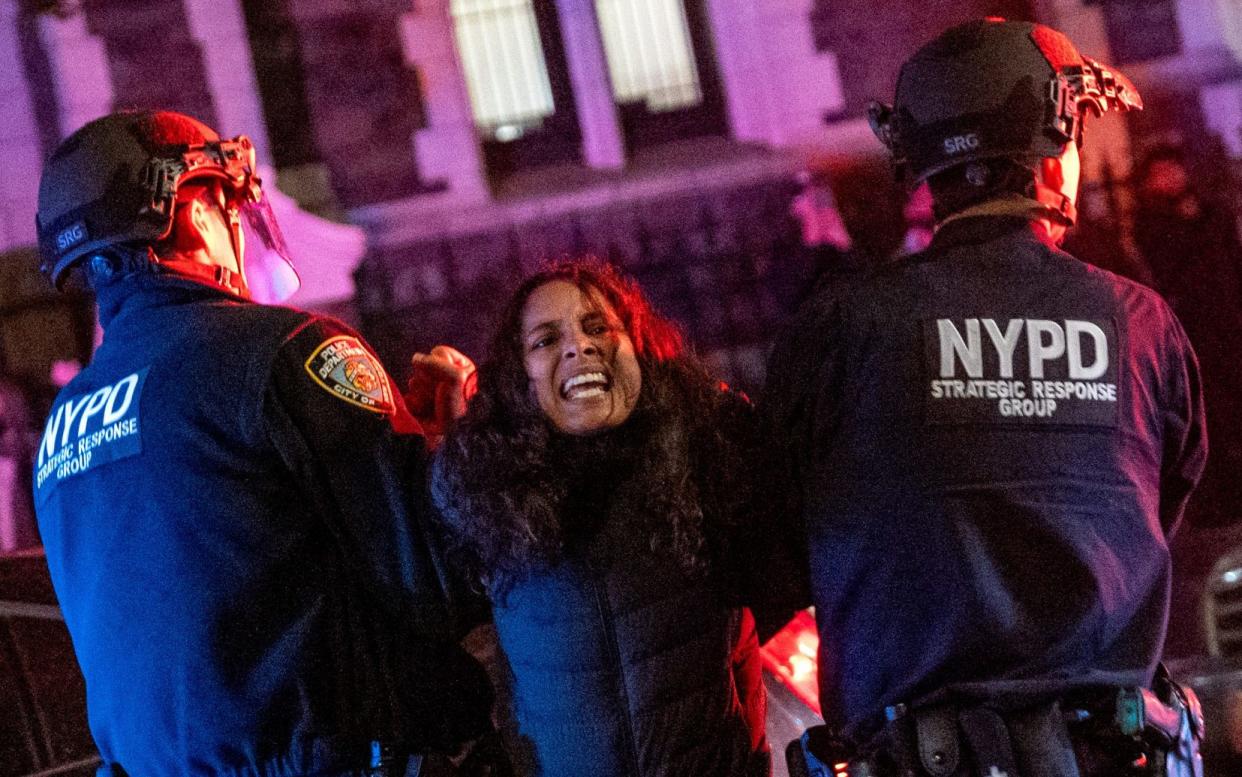
Not since 1968 had Columbia University witnessed scenes like it.
Hamilton Hall, in New York, a centrepiece of the elegant Ivy League campus, has long served as a garrison for student activists.
It was the backdrop to demonstrations against racial inequality, the Vietnam War and the apartheid regime in South Africa.
But after two weeks of sprawling protests against Israel’s action in Gaza left the university in a state of paralysis, Columbia’s leaders and police said they had “no choice” but to act.
By Tuesday night, hundreds of students, like their predecessors before, had occupied Hamilton Hall in an anti-war protest.
They had barricaded themselves in with vending machines, sofas and their own bodyweight to reinforce the doors and windows.
Half a century ago, the clashes between police and anti-war protesters were marred by violence that ignited a wave of campus activism across America.
On Tuesday night, they were stamped out by a calm and coolly efficient brigade of officers clad in riot gear.
It was, said Tarik Sheppard of the NYPD, just “another example of why we’re called New York’s finest”, during a self-congratulatory press conference.
Police raids on other US universities were less peaceful. And while Columbia’s protesters are gone for now, they have vowed to return.
The unrest at Columbia began in mid-April, when students colonised a patch of campus and proclaimed it the “Gaza Solidarity Encampment”.
In an echo of the Vietnam War protesters of 1968, they declared it “a liberated zone”.
The university’s president, Nemat Shafik, testifying before Congress, promised tough action and soon called on police to disband the encampment.
More than 100 were arrested, but what was seen as a heavy-handed response had backfired: hundreds more simply relocated to another patch of lawn.
By Monday, with the university setting out a deadline to end the encampment, an off-shoot of demonstrators had decided to escalate the situation.
The protest split into two that evening: one remaining on Columbia’s West Lawn, and a second moving to Hamilton Hall.
By 12.30am on Tuesday, protesters had smashed a window to gain entry into the hall and rebranded it “Hind Hall”, in memory of Hind Rajab, a six-year-old Palestinian girl killed “at the hands of the genocidal Israeli state”.
Those barricaded into Hamilton Hall were an “autonomous subgroup” of students who felt “betrayed” by Columbia and its reluctance to engage in negotiations, said Mahmoud Khalil, a lead negotiator for the encampment, organised by Columbia University Apartheid Divest, a coalition of student organisations.
This is how the night of chaos unfolded:
Columbia University, New York City
6pm
Mayor Eric Adams claims ‘external actors’ involved in protests
For close to 48 hours, New York City’s officials had watched, alert but inactive, as Columbia’s campus came to a near complete lockdown.
Dr Shafik, who had previously suggested police action had been counterproductive, recanted.
At 6pm, Eric Adams, New York’s mayor, said police intelligence had detected a shift in the tactics of the protesters, which had been instigated, he said, by “professional outside agitators”.
Edward Caban, New York Police Department (NYPD) commissioner, said the new tactics were “endangering public safety”.
Mr Caban and Mr Adams urged protesters to abandon their posts, saying: “This must end now.”
7pm
Hundreds of NYPD officers arrive at university
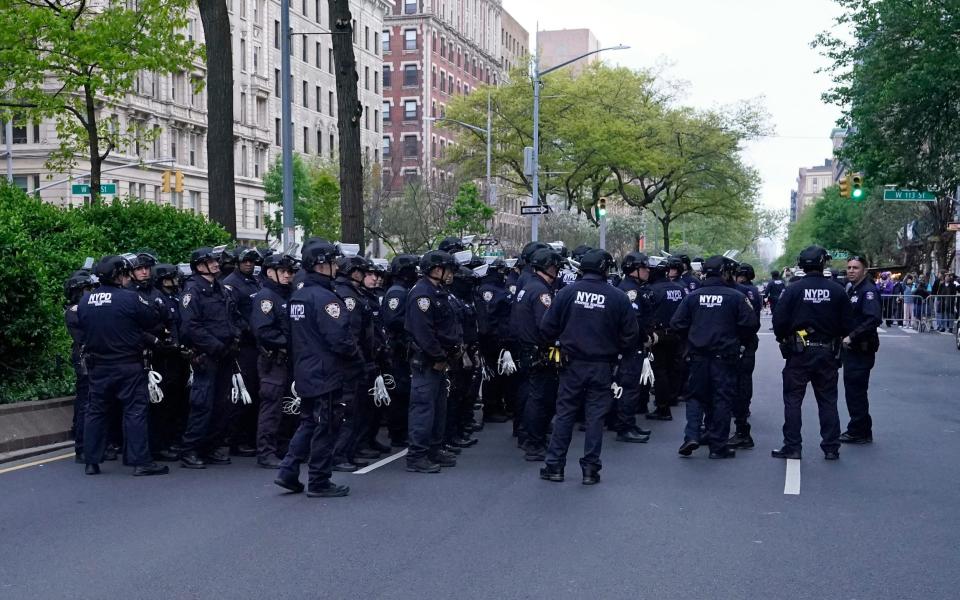
Within an hour of Mr Adams’s press conference, rows of NYPD officers clad in riot gear were assembled on barricaded streets at the university’s gates.
8pm
University staff sent ‘shelter in place’ notice

Columbia University’s chapter of the American Association of University Professors condemned the heavy police presence, saying “armed police entering our campus places students and everyone else on campus at risk”.
“Columbia faculty have spent the day offering our help to defuse the situation on Columbia’s campus and have been rebuffed or ignored,” the chapter said in a statement.
“We hold university leadership responsible for the disastrous lapses of judgment that have gotten us to this point.”
At 8.20pm, the university sent out a “shelter in place” text alert, according to Joseph Howley, a professor of classics.
9pm
NYPD officers in riot gear move in
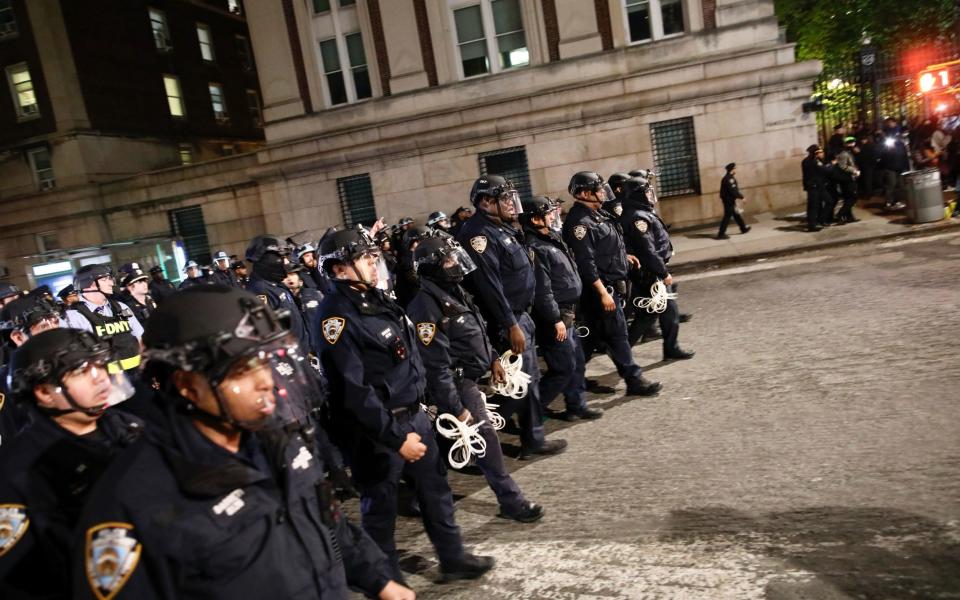
Hundreds of NYPD officers, wearing helmets with protective visors, riot shields and holding plastic handcuffs, began entering the campus as the darkness closed in.
Once inside, they formed two groups. One group encircled the main encampment on West Lawn, going systematically from tent to tent, using torches to search inside. From the dormitories above, some screamed, “shame on you”.
9.30pm
Police enter Hamilton Hall
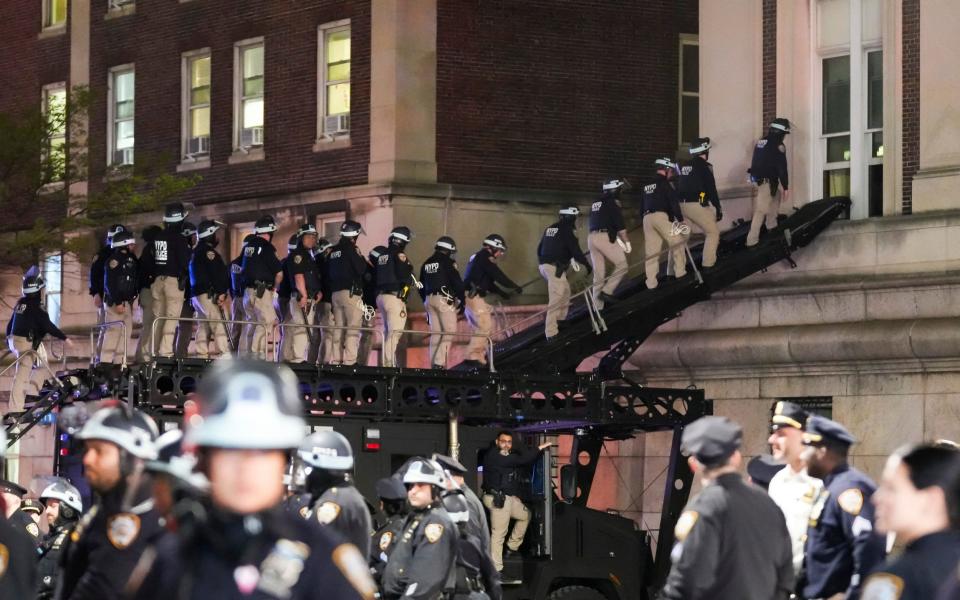
The second group proceeded to Hamilton Hall, ordering bystanders to evacuate as they went.
A police truck equipped with a ladder was positioned outside. Officers clambered up from it to a second-floor window to gain entrance to Hamilton Hall.
They proceeded single file, battling through an obstacle course of vending machines, sofas and other furniture to reach the students.
9.40pm
First students removed from Hamilton Hall
Within minutes, the first arrests had been made. Soon, coachloads were being transported to police stations for processing.
10pm
NYPD operation winds down
By about 10 pm, the NYPD operation was drawing to a close.
For their final act, officers tore down the demonstrators’ banners proclaiming “student intifada” and the Palestinian flag flying from a flagpole in the heart of campus, restoring the US flag, or in the vernacular of the NYPD, “Old Glory”.
University of California, Los Angeles
11pm (Pacific Time)
Unrest spreads to the West Coast
Meanwhile, on the West Coast, there were more violent clashes amid efforts to remove similar university encampment protests.
At the University of California, Los Angeles (UCLA), there were reports of pepper spray being used on protesters as the metal barricades surrounding the encampment were set upon.
It was unclear who was behind the action, with many of the clashes appearing to play out between protesters and counter-protesters. Reporters from CNN witnessed duelling protesters battling with boards and debris as tensions escalated.
Some footage showed masked people throwing metal and wood, and some even wielding tennis rackets and skateboards.
2am (PT)
Riot police deployed
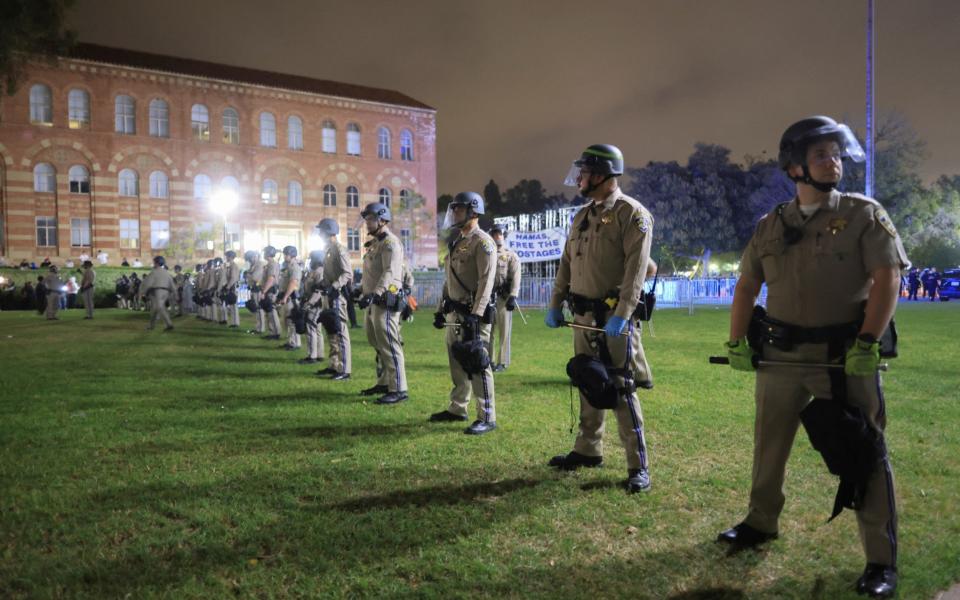
UCLA said medical teams and police were “immediately” called to the scene when the violent confrontations broke out.
However, some protesters complained that the “university did nothing to stop” the clashes. Dozens reported injuries.
Riot police from the Los Angeles Police Department (LAPD) were reported to have arrived on the university’s campus by the early hours.
There was also unrest at college campuses in Arizona, Georgia and Wisconsin.
Democrats are reportedly concerned that prolonged unrest could hurt Joe Biden’s re-election chances.
“The longer they continue, and the worse that they get, the worse it’s going to be for the election overall,” one House member told the news website Axios.
The demonstrations were “bringing out the public’s most conservative side”, they added.

